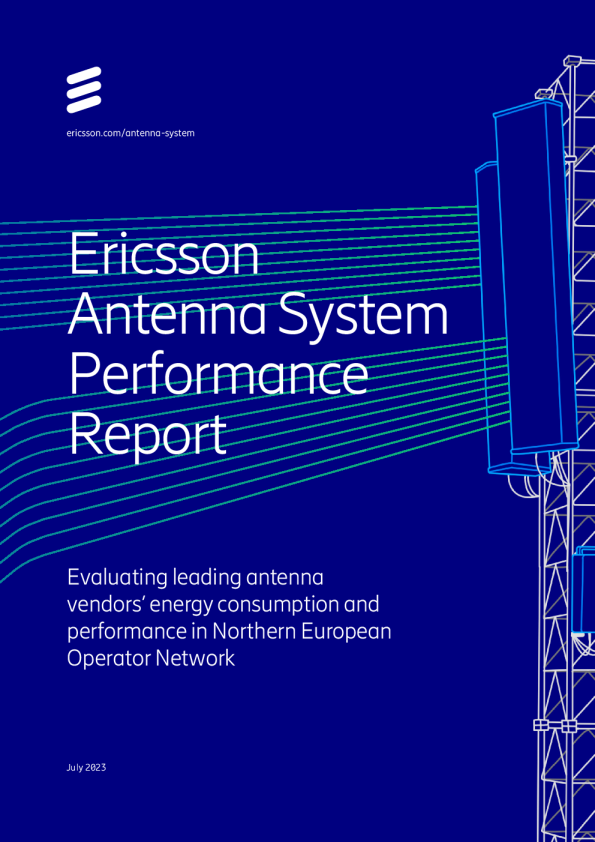赋予连接能力对于天线供应商至关重要。
 AI智能总结
AI智能总结
爱立信天线系统性能报告 评估主要天线rs的能量消耗与vendo在北欧运营商网络中的表现 基准测试天线性能 本报告强调在提升用户体验和运营效率中,天线和波束效率的重要性,通过减少能源消耗和总拥有成本。 基准比较 01 供应商A 02 爱立信03 供应商B 一个高性能的天线系统在同类产品中能耗更低,同时还带来其他显著益处,包括: • 增加的覆盖潜力和成本效益高的网络扩展 • 更好的信号质量、用户体验和终端设备电池寿命 研究方法概述 一家可观的通信服务提供商(CSP)对包括爱立信在内的三家关键天线供应商进行了系统评估。评估方法包括天线数据表分析、结构化无线接入网络关键性能指标(KPI)和驱动测试——在不同的无线电输出功率设置下分析了每个天线的性能和节能效果。 方法 爱立信天线系统 降低爱立信天线无线电输出功率29%,每个站点每年实际节省>4716千瓦时。 -29%电力使用 +7.5%MB/kWh 提供比性能最佳竞争对手(Vendor B)每千瓦时多7.5%的流量量的交付,在降低的功率设置下。 +12%下行链路用户吞吐量 并且,相比于供应商B,下链用户吞吐量提高了12%。 +57%上行链路用户吞吐量 是的,57%!与Vendor B相比,更好的上行用户吞吐量。 深入研究结果 结果显示,与同行相比,爱立信天线系统在每种场景和几乎所有时间段内均表现出色。注意:需要将站点能耗与数据流量(下行和上行)一起分析,以考虑变化的流量模式。 下行链路结果 爱立信在最大功率降低方面优于供应商B。爱立信和供应商B在基准功率输入方面也优于供应商A。 链路结果 爱立信天线系统的性能在上行链路相比于下行链路的吞吐量表现更为突出。 降低成本并推动节约。 为了揭示更大的优势,需要更广泛的研究范围,该范围包括低频段(不仅限于中频段)以及总拥有成本(TCO)的改进。 主要点 在700/800/900兆赫频段中,存在着一个巨大的尚未开发的节能机会。这正是爱立信天线系统所擅长的领域,它们经过精心设计,旨在提供卓越的低频段性能。 爱立信天线系统是一种高性能、节能且可持续的解决方案。凭借高质量、简单安装、降低风负荷和可靠的供应链,爱立信系统显著降低了总拥有成本(TCO)。 随着我们进入数字时代,Ericsson天线一个系统正在积极定义网络连接的未来。S凭借其开创性的解决方案,通过其专注于高性能、节能和可持续网络的焦点,确保了其在网络技术领域的领导地位和模范作用。 结论




